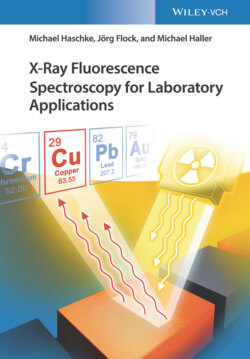Читать книгу X-Ray Fluorescence Spectroscopy for Laboratory Applications - Michael Haschke, Jörg Flock - Страница 9
Preface
ОглавлениеThe discovery of X-rays by Wilhelm Conrad Röntgen dates back to nearly 125 years. Despite their “age,” the research and discoveries that have been made in the past and today make X-rays one of the most powerful analytical tools available today. The discovery of this part of the electromagnetic spectrum has seen many applications. First, used for medical purposes by Röntgen himself, who found that the newly discovered rays can penetrate and at the same time can be absorbed by different types of matter. Therefore, it was now possible to image the human body. Later, Max von Laue showed that they are a higher-frequency part of the electromagnetic spectrum where natural light is also a part of. This led to his work on diffraction of X-rays, which to this day is used to investigate the crystalline and amorphous structure of solids. Finally, Moseley found that every element emitted characteristic X-ray radiation that can be used to determine the qualitative and quantitative elemental composition of materials of different types. This is the application that is most interesting for us – the spectroscopists.
X-ray fluorescence spectroscopy has now developed into an analytical technique that, due to its robustness and flexibility, can be used in almost all scientific areas, in research, and above all in quality control in industrial production. The technique has become so powerful because of its ability to analyze many different material types, having a wide range of elements and concentrations. The sample preparation is mostly simple or even not required, therefore making it possible to fully automate the entire analysis process.
Even when one has many years of experience with the method, specific expertise is still required to achieve reliable results, especially since the applications for X-ray fluorescence spectrometry have been significantly expanded in recent years due to new components being developed and becoming commercially available for X-ray spectrometers. Examples of such are X-ray optics, new types of detectors, and the availability of powerful computing technique and software solutions.
A combination of theoretical knowledge and practical know-how about the materials to be examined, the best practices for sample preparation, and the most suitable measuring instrument at optimal measurement conditions is required to make the most precise and true analysis results. The intention of this book is to summarize the experiences of the analytical community working with X-ray fluorescence. For many years this community has convened at global annual user meetings and conferences for X-ray fluorescence spectrometry, covering all types of applications of X-ray spectroscopy. The work presented at these meetings shares new developments in the field of device technology and provides information on the analytical capabilities of X-ray fluorescence for known applications, for instance, in the analysis of metallurgical or mineralogical samples. Interesting new applications are presented as well. These experiences are the basis of this book in which we tried to summarize but also to preserve this knowledge.
The book is addressed to current and future users of X-ray fluorescence analysis. It strives to provide suggestions and examples on how to use X-ray fluorescence and what kind of results can be expected, as well as advice on suitable preparation techniques and measurement conditions. Accordingly, in addition to the method-specific basics, the book contains information about the essential preparation techniques and a variety of material-specific applications that can serve as the basis for your own current and future measurement concepts.
Many inspiring discussions and joint projects with numerous users and instrument manufacturers have been included in this book. The authors want to especially thank Prof. A. Janßen, Ms.Sc. S. Hanning and many other colleagues not mentioned here for their support of this work. Our special acknowledgement goes to Dr. A. von Bohlen, he not only supported the project by a lot of discussions but also provided our work with elaborated information about conditions and applications for total reflection X-ray spectrometry.
Michael Haller dedicates his work in this book to the late Dr. Volker Röβiger. Friend, mentor, and true Renaissance man, his enthusiasm and kindness were an inspiration to all who had the privilege to know him.
Finally, thanks to the publisher Wiley-VCH for their support and smooth completion of this project.
We hope that this book will inspire and fascinate all readers using X-rays as an analytical tool.
February 2020
Michael Haschke, Jörg Flock, Michael Haller Eggersdorf, Schwerte and Middletown
